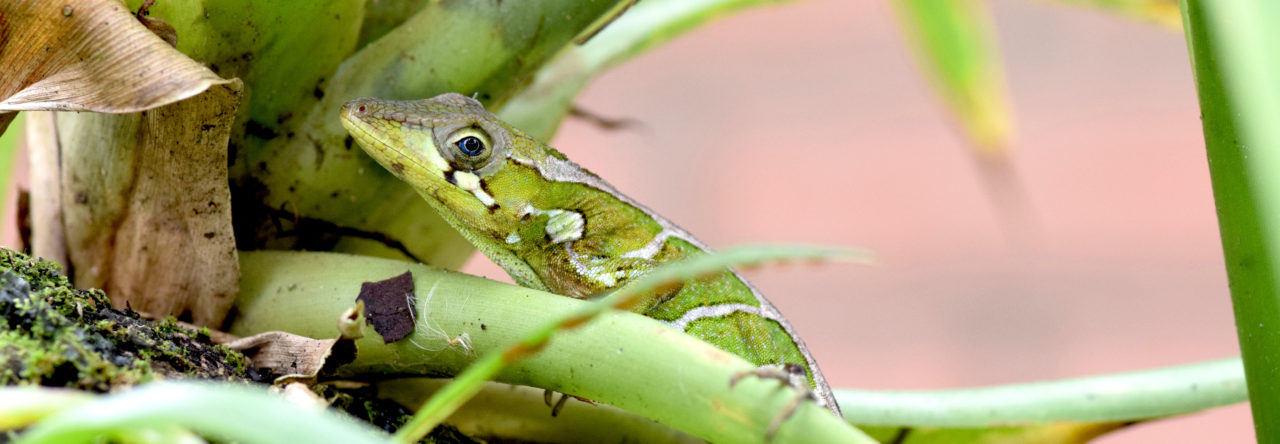We all know that much of the natural world is being destroyed, fragmented, and altered by man’s activities. In many cases, the survival of species will depend on their ability to live in these human-transformed habitats. The field of “countryside ecology” has developed in recent years to investigate just how much diversity can be maintained in such habitats and to identify the factors that are most important in maximizing this diversity.
In a recent paper in Ecology, Mendenhall et al. look at the area surrounding the Organization of Tropical Studies’ Las Cruces Field Station. As in many areas in Costa Rica and elsewhere, much of the landscape has been changed to pastures and coffee plantations. Surprisingly, however, there are lots of little bits of forests meandering through these disturbed areas.
The authors find that a reasonably large amount of the species diversity of herps is maintained in these areas. In addition, the forest fragments turn out to be crucial for much of this diversity. Why these fragments are maintained is not known by the authors and an important area for further inquiry.
And what about the anoles? Anolis polylepis was the single most common herp in the area. As the chart below shows, the extent to which anoles are found in disturbed areas varies by species, not surprising given the differences in ecology of the species.
Not shown on the graph are several other anoles seen in lower numbers, specifically four A. biporcatus (two in pasture, two in coffee plantation) and nine A. woodi (four in the forest reserve, five in the forest fragments).
Here’s the paper’s abstract:
The future of biodiversity and ecosystem services depends largely on the capacity of human-dominated ecosystems to support them, yet this capacity remains largely unknown. Using the framework of countryside biogeography, and working in the Las Cruces system of Coto Brus, Costa Rica, we assessed reptile and amphibian assemblages within four habitats that typify much of the Neotropics: sun coffee plantations (12 sites), pasture (12 sites), remnant forest elements (12 sites), and a larger, contiguous protected forest (3 sites in one forest). Through analysis of 1678 captures of 67 species, we draw four primary conclusions. First, we found that the majority of reptile (60%) and amphibian (70%) species in this study used an array of habitat types, including coffee plantations and actively grazed pastures. Second, we found that coffee plantations and pastures hosted rich, albeit different and less dense, reptile and amphibian biodiversity relative to the 326-ha Las Cruces Forest Reserve and neighboring forest elements. Third, we found that the small ribbons of ‘‘countryside forest elements’’ weaving through farmland collectively increased the effective size of a 326-ha local forest reserve 16-fold for reptiles and 14-fold for amphibians within our 236-km2 study area. Therefore, countryside forest elements, often too small for most remote sensing techniques to identify, are contributing; 95% of the available habitat for forest-dependent reptiles and amphibians in our largely human-dominated study region. Fourth, we found large and pond-reproducing amphibians to prefer human-made habitats, whereas small, stream-reproducing, and directly developing species are more dependent on forest elements. Our investigation demonstrates that tropical farming landscapes can support substantial reptile and amphibian biodiversity. Our approach provides a framework for estimating the conservation value of the complex working landscapes that constitute roughly half of the global land surface, and which are experiencing intensification pressure worldwide.
- Evolution in Real Time on Lizard Island - March 23, 2025
- Spider Snags Adult Anolis osa - March 22, 2025
- An Homage to the Green Anoles of New Orleans - March 21, 2025




Leave a Reply